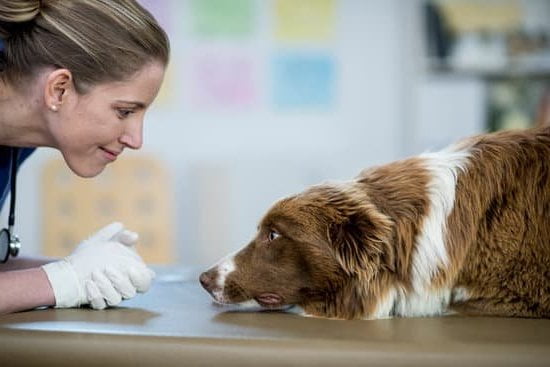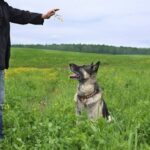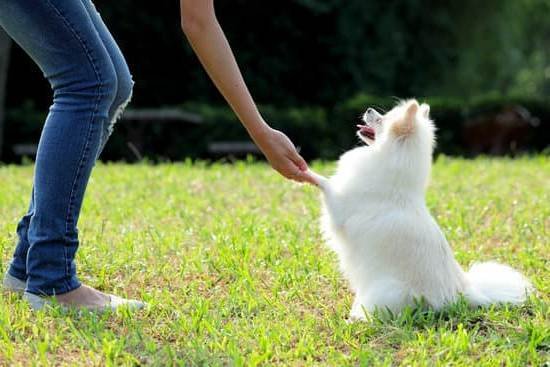Are you wondering how to train your dog to pee and poop indoors? Indoor potty training can be a convenient solution for pet owners who may not have access to outdoor areas or for dog owners who live in high-rise buildings. In this article, we will explore the need and benefits of indoor potty training for dogs, as well as provide tips and techniques to successfully train your dog to relieve themselves indoors.
Indoor potty training has become increasingly popular among dog owners, especially those living in urban environments or facing mobility challenges. Understanding your dog’s behavior and potty patterns is essential in successfully implementing an indoor potty training routine. By choosing the right method and effectively creating a designated indoor potty area for your dog, you can simplify the process and avoid accidents around your home.
Positive reinforcement plays a crucial role in encouraging indoor potty training, as it promotes good behavior while strengthening the bond between you and your furry companion. Consistency and patience are also key factors in achieving long-term success with indoor potty training. Throughout this article, we will address common challenges and setbacks that may arise during the training process, as well as provide strategies for maintaining indoor potty training success for the long term.
Understanding Your Dog’s Behavior and Potty Patterns
When it comes to indoor potty training for your dog, it is essential to understand your pet’s behavior and potty patterns. By familiarizing yourself with these aspects, you can effectively train your dog to pee and poop indoors in a consistent and successful manner.
Dogs have their own unique potty patterns, which are influenced by factors such as age, breed, diet, and physical activity. It is important to pay attention to your dog’s behavior to identify signs that they need to relieve themselves. Some common indicators include circling or sniffing around a specific area, whining or barking, or suddenly becoming restless.
In addition to recognizing your dog’s behavior cues, understanding their potty patterns is crucial for indoor potty training. This involves observing the times of day when your dog typically needs to go potty and creating a schedule around those times. By doing so, you can proactively guide your dog to their designated indoor potty area when they are most likely to relieve themselves.
To effectively understand your dog’s behavior and potty patterns, consider the following tips:
- Observe your dog’s body language and behaviors closely
- Keep a journal or log of when your dog goes potty
- Notice any specific triggers that prompt your dog to need a bathroom break
Choosing the Right Indoor Potty Training Method for Your Dog
When it comes to indoor potty training for your dog, there are a few different methods that you can consider. Each method has its own pros and cons, so it’s important to choose the one that will work best for both you and your furry friend.
Pee Pads
One popular indoor potty training method is using pee pads. Pee pads are absorbent pads that are placed on the floor for your dog to use as a bathroom area. This method is convenient for pet owners who may not have access to outdoor areas or have limited mobility. However, some dogs may have difficulty transitioning from using pee pads indoors to going outside.
Grass Patch
Another option is using a grass patch. These patches contain real or synthetic grass and can be placed in a designated indoor area for your dog to use as a potty spot. The natural feel of the grass may help make the transition from indoor to outdoor potty training smoother for your dog.
Litter Box
Some pet owners opt for using a litter box as an indoor potty training method for their dogs. This can be especially effective for smaller breeds who are accustomed to using litter boxes. Just like with cats, the key is choosing the right type of litter that your dog prefers.
Ultimately, the right indoor potty training method for your dog will depend on their size, breed, and individual preferences. It may require some trial and error, but with patience and consistency, you can find the best method that works for both you and your furry companion.
Creating a Designated Indoor Potty Area for Your Dog
To create a designated indoor potty area for your dog, follow these steps:
- Choose a specific location in your home where you want your dog to do their business. This should be an easily accessible and well-ventilated area.
- Consider using indoor potty products such as artificial grass patches, pee pads, or litter boxes that are specifically designed for dogs. These products can help contain the mess and make cleanup easier.
- Use barriers or gates to define the boundaries of the potty area and prevent your dog from accessing other parts of the house while they are still learning.
By creating a designated indoor potty area for your dog, you are providing them with a consistent and familiar spot to go when nature calls, which is essential for successful indoor potty training. Remember to regularly clean and maintain the potty area to ensure hygiene and encourage your dog to continue using it.
Overall, creating a designated indoor potty area for your dog requires careful consideration of their needs and behavior. By following these steps and being patient, you can effectively set up a space that facilitates successful indoor potty training for your beloved pet.
Using Positive Reinforcement and Rewards to Encourage Indoor Potty Training
Understanding the Power of Positive Reinforcement
Positive reinforcement is a powerful tool in training dogs, including indoor potty training. When your dog successfully pees or poops in the designated indoor potty area, it is important to immediately provide positive reinforcement. This can come in the form of verbal praise, petting, or offering a small treat. The key is to make sure your dog understands that using the indoor potty area leads to positive and enjoyable outcomes.
Implementing a Reward System
In addition to verbal praise and petting, implementing a reward system can further motivate your dog to use the designated indoor potty area. Small treats that are specifically reserved for successful potty trips can be incredibly effective in reinforcing this behavior. When using rewards, it’s important to be consistent and only offer them immediately after your dog uses the indoor potty area as intended.
Using Clicker Training
Clicker training is another valuable method that can be used in conjunction with positive reinforcement for indoor potty training. The clicker serves as a distinct sound cue that signals to your dog when they have done something right.
By pairing the click with a reward, such as a tasty treat, your dog learns to associate the sound with a positive outcome. Over time, this can strengthen their understanding of where they should be eliminating indoors and increase their likelihood of doing so consistently.
Consistency and Patience
In addition to consistency and patience, it’s important to establish a routine for your dog. Dogs thrive on routine, so taking them to their indoor potty area at the same times each day can help them develop a regular schedule for eliminating indoors. This will make it easier for them to understand what is expected of them and reduce the likelihood of accidents.
Using positive reinforcement and rewards is another important aspect of successfully training your dog to pee and poop indoors. When your dog eliminates in the designated indoor potty area, be sure to praise them and offer a treat as a reward. Positive reinforcement helps your dog associate using the indoor potty area with good behavior, making them more likely to continue doing so in the future.
| Key Factors | Importance |
|---|---|
| Consistency | Establishing a routine helps dogs understand where they should eliminate indoors |
| Patience | A key factor in dealing with accidents during the training process without getting discouraged |
| Positive Reinforcement | Helps dogs associate using the indoor potty area with good behavior |
Addressing Common Challenges and Setbacks in Indoor Potty Training
Indoor potty training for dogs can sometimes present common challenges and setbacks that may hinder the process. One of the most common challenges is accidents happening outside the designated indoor potty area.
This can be frustrating for pet owners, but it’s important to remember that accidents are a normal part of the learning process. It’s crucial not to scold or punish your dog for these accidents, as this can lead to fear and anxiety, making the training process even more challenging.
Another challenge is when dogs refuse to use their designated indoor potty area. This can happen if the area is not appealing to them or if they have had negative experiences there.
To address this setback, it’s essential to make the potty area attractive by adding some of your dog’s favorite toys or treats, creating a comfortable and inviting space. Additionally, using positive reinforcement such as praise and treats when they use the designated area will encourage them to continue doing so.
Moreover, some dogs may take longer than others to learn indoor potty training, leading to frustration for pet owners. It’s important to remember that every dog is different, and patience is key during this process. Consistency in training methods and schedules will eventually lead to success. Celebrate small victories along the way, and remember that setbacks are normal but temporary hurdles towards achieving successful indoor potty training with your dog.
| Common Challenge/Setback | Addressing Strategy |
|---|---|
| Accidents outside designated area | Avoid punishment; Stay consistent with training |
| Dogs refusing to use designated area | Add toys/treats; Use positive reinforcement; Be patient |
| Varying learning pace among dogs | Be patient; Stay consistent with training; Celebrate small victories |
Maintaining Indoor Potty Training Success for the Long Term
Now that your dog has successfully learned to pee and poop indoors, it is essential to maintain their training success for the long term. Consistency is key in ensuring that your furry friend continues to use their designated indoor potty area. Make sure to stick to a regular schedule for potty breaks, as this will help reinforce the habit of using the indoor potty area.
In addition to consistency, it’s important to continue using positive reinforcement and rewards. By praising and rewarding your dog every time they use the indoor potty area, you are reinforcing the behavior and encouraging them to continue doing so. This positive feedback will go a long way in maintaining their training success.
Another way to ensure long-term success in indoor potty training is by monitoring your dog’s behavior and adjusting their potty schedule as needed. Keep an eye on any signs that they may need to go potty, such as pacing or sniffing around, and take them to their designated indoor potty area promptly. By staying attentive to your dog’s needs, you can prevent accidents and maintain their indoor potty training success over time.
Conclusion
In conclusion, indoor potty training for dogs can be a challenging but rewarding process. By understanding your dog’s behavior and potty patterns, choosing the right training method, creating a designated indoor potty area, using positive reinforcement, and maintaining consistency and patience, you can successfully train your dog to pee and poop indoors. It’s important to remember that setbacks may occur, but with perseverance and addressing common challenges, long-term success is achievable.
As you celebrate your dog’s successful indoor potty training journey, it’s essential to maintain the established routine and continue to provide positive reinforcement. Consistency is key in reinforcing the desired behavior, so consistently using the designated indoor potty area and offering rewards will help solidify the training. Additionally, monitoring your dog’s behavior for any signs of needing to go potty will also contribute to maintaining success.
Remember that every dog is different, so it’s important to be patient and adaptable throughout the indoor potty training process. Celebrate each milestone achieved by your furry companion and continue to support them in their indoor potty training journey. With dedication and commitment, you can create a happy and healthy environment for both you and your beloved pet.
Frequently Asked Questions
How Do I Get My Dog to Use an Indoor Potty?
To get your dog to use an indoor potty, you can start by designating a specific area for the potty, such as a pee pad or a dog litter box. Use positive reinforcement like treats and praise when your dog uses the potty in the right place.
Consistency is key, so make sure to take your dog to the indoor potty at regular intervals, especially after meals and naps.
Can Dogs Be Trained to Pee and Poop in a Particular Place?
Yes, dogs can be trained to pee and poop in a particular place. The key is consistent training using positive reinforcement. Designate a specific spot for your dog’s potty area and use rewards when they go there. It’s important to be patient and understanding during the training process, as accidents are likely to happen during the learning phase.
How Do You Train a Dog That Keeps Pooping in the House?
If you’re dealing with a dog that keeps pooping in the house, it’s crucial to first rule out any potential medical issues by taking them to the vet. Once health problems have been ruled out, focus on consistent training and supervision. Take your dog outside frequently, especially after meals and naps, and provide plenty of opportunities for them to go potty outside.
Clean up accidents inside without scolding the dog, as this could create negative associations with going potty in front of you. Gradually increase their freedom inside the house as they show progress in their potty training.

Welcome to the blog! I am a professional dog trainer and have been working with dogs for many years. In this blog, I will be discussing various topics related to dog training, including tips, tricks, and advice. I hope you find this information helpful and informative. Thanks for reading!





